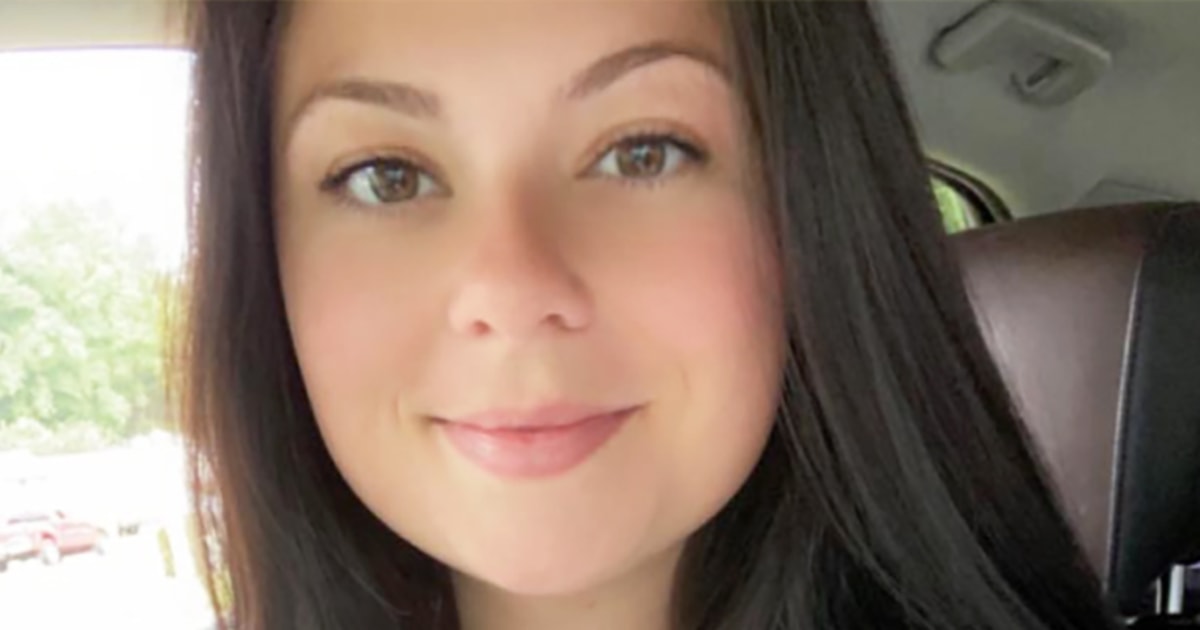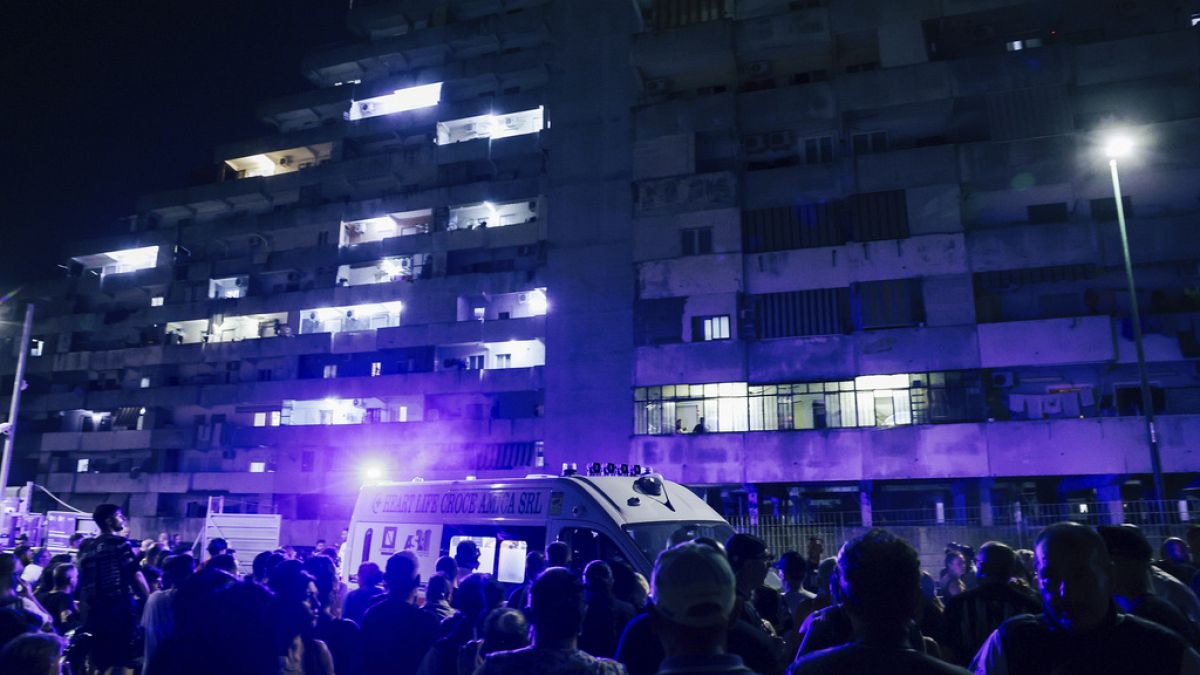North Dakota
Carbon dioxide storage, utilization projects get Industrial Commission funding

BISMARCK — The state Industrial Commission has granted $100,000 for the early stages of another carbon capture project slated for southwest North Dakota.
The three-member regulatory body made up of the governor, attorney general and agriculture commissioner awarded the funding Tuesday to the Prairie Horizon Carbon Management Hub, a joint undertaking of the University of North Dakota Energy and Environmental Research Center and Prairie Horizon, a consortium involving Marathon Petroleum and TC Energy.
This tranche of funding will mostly go toward a two-year evaluation of the area’s infrastructure and geology, which may require different considerations than other carbon storage projects given the area’s historic and active oil and gas development.
If the Hub is built out, it would capture climate-warming carbon dioxide emissions from Marathon’s biofuels refinery in Dickinson and the Prairie Horizon Hydrogen facility, another collaboration between Marathon and TC Energy expected to be built in southwest North Dakota in the coming years.
Prairie Horizon Hydrogen is one part of the Heartland Hydrogen Hub which has been allocated $925 million by the federal Energy Department for clean hydrogen projects. Prairie Horizon plans to produce hydrogen with methane natural gas, a practice which will need to employ the use of carbon capture for it to be considered clean under federal standards.
The Renewable Energy Council, an advisory group to the Industrial Commission, recommended the carbon capture project for funding earlier this month. The program derives its funding from the Resources Trust Fund, which is financed through the oil extraction tax and has a $3 million spending cap this biennium. This part of Prairie Horizon’s project has already received $2.5 million from the Energy Department. Prairie Horizon will contribute up to $625,000.
Carbon storage is a key element of Gov. Doug Burgum’s goal for North Dakota to reach carbon neutrality by 2030. But storage is not the state’s only plan for CO2. Two projects for utilization of captured emissions also received funding Tuesday.
The commission awarded $100,000 to Semplastics, a Florida-based company that is studying the potential for mixing captured CO2 with wastewater from oil production to create building materials. Semplastics is working with the EERC on the project. The funding was recommended by the Lignite Research Council, another advisory body for the commission. Funding comes from the Lignite Research Fund, which gets its cash from a combination of taxes on oil, gas and coal. It was granted an $18.5 million spending cap this biennium.
The commission also approved $135,000 to the State Energy Research Center for a project that will forecast the near-term impact of using CO2 for enhanced oil recovery in the Bakken oil fields. The Center is part of the EERC and is funded through taxes on oil and gas; the Industrial Commission can grant up to $7.5 million to the Center per biennium.
Enhanced oil recovery is a process of injecting gases, water or other chemicals underground to pump out hard-to-recover oil, which is around 30-60% of what is in a reservoir, according to the federal Energy Department.
The Department of Mineral Resources, an arm of the Industrial Commission, is finalizing new regulations that would allow operators to secure a bond which would place a well that would otherwise be considered abandoned on enhanced oil recovery status for potential use when the technology is more widely available, a result of recent legislation. A bond is an assurance of money to pay for plugging and reclamation should the company abandon a well site and ignore its responsibility to clean it up. A landowner can challenge the well’s status after 12 years.
Proponents of enhanced oil recovery say it could lower the life-cycle emissions of oil while boosting production. Without utilizing the practice, North Dakota’s oil output will begin to decline in the coming decades, officials have said.
Some environmental groups question the practice’s benefits. When the rule was first introduced in September, the
Northwest Landowners Association told the Tribune
it worries the rules would allow operators to indefinitely delay the expensive process of plugging and reclaiming oil wells that are no longer economic under readily available technology.
Mineral Resources has defended the rules as thorough. Assistant Director Mark Bohrer said that Mineral Resources turned down a request by the North Dakota Petroleum Council, an oil and gas trade group, to loosen requirements for wells placed on enhanced oil recovery status.
“We felt (12 years is) a significant time and we thought that the wells should be adequately constructed to sit there idle that long and not having to worry about endangering the surface waters,” he said.
For the time being, much of the captured CO2 in North Dakota will be stored.
Separately on Tuesday, Andrew Sorbo, vice president of strategic initiatives at Minnkota Power Cooperative, presented the commission with updates for Project Tundra, which will capture emissions from the Milton R. Young coal-fired power plant in Oliver County and be the country’s largest carbon storage project if built. A final decision on whether Minnkota will go ahead with Project Tundra is expected next year.
Sorbo said the cooperative sees enhanced oil recovery as a possibility in the future, but the heftier federal tax credits for storage makes pumping CO2 underground more attractive.
“Economics obviously drive almost every decision that gets made,” he said.

North Dakota
North Dakota judge will decide whether to throw out a challenge to the state's abortion ban
BISMARCK, N.D. (AP) — Attorneys argued Tuesday over whether a North Dakota judge should toss a lawsuit challenging the state’s abortion ban, with the state saying the plaintiffs’ case rests on hypotheticals, and the plaintiffs saying key issues remain to be resolved at a scheduled trial.
State District Judge Bruce Romanick said he will rule as quickly as he can, but he also asked the plaintiffs’ attorney what difference he would have at the court trial in August.
The Red River Women’s Clinic, which moved from Fargo to neighboring Moorhead, Minnesota, filed the lawsuit challenging the state’s now-repealed trigger ban soon after the fall of Roe v. Wade in 2022. The clinic was North Dakota’s sole abortion provider. In 2023, North Dakota’s Republican-controlled Legislature revised the state’s abortion laws amid the lawsuit. Soon afterward, the plaintiffs filed an amended complaint, joined by doctors in obstetrics, gynecology and maternal-fetal medicine.
North Dakota outlaws abortion as a felony crime, with exceptions to prevent the mother’s death or a “serious health risk” to her, and in cases of rape or incest up to six weeks of pregnancy.
The plaintiffs allege the law violates the state constitution because it is unconstitutionally vague for doctors as to the exceptions, and that its health exception is too narrow.
The state wants the complaint dismissed. Special Assistant Attorney General Dan Gaustad said the plaintiffs want the law declared unconstitutional based upon hypotheticals, that the clinic now in Minnesota lacks legal standing and that a trial won’t help the judge.
“You’re not going to get any more information than what you’ve got now. It’s a legal question,” Gaustad told the judge.
The plaintiffs want the trial to proceed.
Meetra Mehdizadeh, a staff attorney with the Center for Reproductive Rights, said the trial would resolve factual disputes regarding how the law would apply in various pregnancy complications, “the extent to which the ban chills the provision of standard-of-care medical treatment,” and a necessity for exceptions for mental health and pregnancies with a fatal fetal diagnosis.
When asked by the judge about the trial, she said hearing testimony live from experts, as compared to reading their depositions, would give him the opportunity to probe their credibility and ask his own questions to clarify issues.
In an interview, she said laws such as North Dakota’s are causing confusion and hindering doctors when patients arrive in emergency medical situations.
“Nationally, we are seeing physicians feeling like they have to delay, either to run more tests or to consult with legal teams or to wait for patients to get sicker, and so they know if the patient qualifies under the ban,” Mehdizadeh said.
In January, the judge denied the plaintiffs’ request to temporarily block part of the law so doctors could provide abortions in health-saving scenarios without the potential of prosecution.
A recent state report said abortions in North Dakota last year dropped to a nonreportable level, meaning there were fewer than six abortions performed in 2023. The state reported 840 abortions in 2021, the year before the U.S. Supreme Court’s ruling overturning Roe v. Wade.
The court’s decision enabled states to pass abortion bans by ending the nationwide right to abortion.
Most Republican-controlled states now have bans or restrictions in place. North Dakota is one of 14 enforcing a ban on abortion at all stages of pregnancy. Meanwhile, most Democratic-controlled states have adopted measures to protect abortion access.
The issue is a major one in this year’s elections: Abortion-related ballot measures will be before voters in at least six states. Since 2022, voters in all seven states where similar questions appeared have sided with abortion rights advocates.
___
Associated Press writer Geoff Mulvihill in Cherry Hill, New Jersey, contributed to this story.
North Dakota
Pressures could lead to more closures at ND nursing homes

BISMARCK — Federal requirements for nursing homes to have a registered nurse on duty 24 hours each day are expected to add pressure to an already challenging workforce situation for the 75 rural and urban facilities across the state.
A majority will have a hard time meeting the 24/7 requirement for RNs, according to the North Dakota Long Term Care Association.
Nikki Wegner, director of the NDLTCA, said most facilities across the state are currently well-staffed except for that RN requirement.
Cost pressures have already led to six facilities closing in the past 35 months, she said.
“We’ve never had that before in our history, and the majority of them were because of staffing issues,” Wegner said.
Urban facilities have until May 2026 to comply with the federal requirements, while those in rural areas have until May 2027.
Rules have also changed, with areas like Dickinson, Devils Lake, Jamestown, Valley City and Williston no longer considered rural, meaning they’ll need to meet requirements sooner.
“I worry about how many facilities might have to close because they can’t meet the standards,” said Reier Thompson, president and CEO of Missouri Slope in Bismarck, which has long-term care for over 250 residents.
“What’s that going to do to access to care, especially in the more rural area, where people are traveling 100 miles from their hometown to a nursing facility, and maybe a spouse is commuting that a couple times a week?” he said. “It’s going to be hard, especially in winter.”
Throughout the COVID-19 pandemic, staffing full-time nurses and nursing assistants at long-term care facilities became a huge challenge. Many turned to short-term contract nurses, and costs soared.
The situation has begun to turn around for Jill Foertsch, administrator at St. Gerard’s Community of Care in Hankinson. St. Gerard’s has added new certified nursing assistants while reducing the use of contract nurses from eight just a short time ago to two.
“We have improved significantly,” Foertsch said.
That being said, finding enough RNs to meet the new requirement is going to be tough.
“We are not able to meet the 24/7 staffing mandate,” she said.
The situation may mirror what happened during the pandemic, but contract RNs are in short supply and high priced, she said.
The one caveat is this time there’s no funding on the horizon.
“We will not be getting any help from the government like we did during COVID, and that’ll be what would most likely help us to shut down, because it’s just not sustainable that way,” Foertsch said.
The NDLTCA estimates contract nurses accounted for around $73 million of statewide nursing costs in 2023, up from around $24 million in 2020.
Staffing at nursing homes in the state is also now around 1,200 workers below what it was in early 2020 numbers, according to the NDLTCA.
The NDLTCA estimated that only 35% of urban facilities and only 14% of rural facilities would currently meet the future 24/7 RN staffing requirement.
Right now, most facilities rely on a mix of RNs, physician’s assistants, nurse practitioners or physicians through phone or telehealth if an RN isn’t on duty beyond the normal daytime shift. Finding RNs to fill overnight and other shifts is going to be difficult.
No funding is earmarked for those shortfalls, the numbers of RNs are just not available, and no pipeline is in the works to increase the availability of RNs.
“We’re still in a workforce crisis, we still rely on a lot of contract nurses, and it’s expensive, and then you add the mandate on there to increase even more,” Wegner said, adding that the state needs at least 80 if not more RNs to fulfill the mandates.
Several states have already met stringent requirements for waivers from the rule, but Wegner isn’t hopeful North Dakota will qualify.
Blake Kragnes, administrator at the 85-bed Knife River Care Center in Beulah, said his nursing home has been able to keep staffing at a good level, but the mandate of the 24/7 requirement for RNs is going to be tough to meet.
“When you look at the number of college grads graduating with a nursing and RN degree, it’s down, and that makes it complicated to meet a mandate that comes with no funding,” he said.
Kragnes is looking at how to increase recruitment and retention by connecting with area high schools to start people in a health care career that may lead them to full-time registered nursing status.
Foreign nurse visa freeze
One avenue most facilities are trying to use is immigration, but the U.S. State Department recently froze EB-3 visas used by foreign nurses for the rest of the fiscal year, leaving around 10,000 foreign nurses in limbo until resolved.
A cap of 40,000 visas for foreign nurses has been in place since 1990, and legislation to increase the cap stalled in the U.S. Congress after its introduction in November 2023.
According to the Migration Policy Institute, international nurses account for around 16% of the nursing workforce in the country.
National health care nonprofit KFF, formerly known as The Kaiser Family Foundation, estimates that 1 in 6 of the 3.2 million RNs in the U.S. is an immigrant nurse.
Amy Kreidt, administrator of St. Luke’s Home in Dickinson, which operates an 88-bed long-term care facility, echoed Foertch’s comments by saying the mandate coupled with the high cost of contract nursing could put more rural nursing homes out of business.
“Right now we’re not (in danger of closing), but if we can’t start getting nurses here, we have to keep that as an option and review,” she said.
St. Luke’s has had success with its foreign nurses, but the visa freezes and annual caps, along with the complicated immigration process, have led to it taking up to four years to get foreign nurses, Kreidt said.
“And that’s if it goes through relatively quickly, and it seems to always have taken that long, but now, with additional delays, it will continue to take that long and longer,” she said. “The contact is only three years long and it takes over four years to get them, so the numbers don’t add up.”
LeAnn Hokanson, vice president of resident services at Missouri Slope, said besides funding to cover nursing costs, there is a major need for both immigration and on expanding nursing programs.
“The (foreign nurses) that we’ve been interviewing most recently, they’ve been waiting and waiting and waiting,” she said. “Some of them wait for 10 years to get their call to have a facility interview them. It’s all stuck in that visa process.”
Contributed / Missouri Slope
Kreidt has previously tapped into the nursing program at Dickinson State University, but with its entire full-time nursing faculty resigning on July 10, the future of that program is uncertain.
The situation also adds further uncertainty regarding the nursing pipeline for health care facilities across the state and region.
North Dakota’s new Office of Legal Immigration is looking to pilot a cap-exempt H-1B visa program in the next several months specifically for foreign nurses, according to a study it released in late May.
This could help increase the numbers of RNs and nurse practitioners, though hurdles exist since the H-1B immigration process is more costly and facilities need to meet eligibility requirements.
This story was originally published on NewsCoopND.org
______________________________________________________
This story was written by one of our partner news agencies. Forum Communications Company uses content from agencies such as Reuters, Kaiser Health News, Tribune News Service and others to provide a wider range of news to our readers. Learn more about the news services FCC uses here.
North Dakota
South Dakota Democratic delegates unanimously endorse Harris as presidential pick • South Dakota Searchlight

The South Dakota delegates to the Democratic National Convention met virtually Monday night and voted unanimously to endorse Vice President Kamala Harris as their nominee in the 2024 presidential race.
South Dakota Democrats hopeful, not yet ready to endorse Harris as presidential nominee
In voting to endorse Harris, South Dakota Democrats fell in line with other state and national Democratic leaders who quickly followed the lead from President Joe Biden, who dropped out of the 2024 race via social media Sunday afternoon and endorsed Harris as his successor shortly thereafter.
Democrats in Nebraska, Maryland, Florida, New Hampshire, Alabama, North Carolina and Virginia were among the states where Democrats backed Harris as of Monday evening.
Harris has also picked up endorsements from key leaders at the national level. California Gov. Gavin Newsom, mentioned as a possible Democratic contender himself, endorsed Harris quickly on Sunday. Former House Speaker Nancy Pelosi endorsed Harris Monday. Senate Majority Leader Chuck Schumer and House Minority Leader Hakeem Jeffries had not endorsed Harris as of Monday evening, but Jeffries said earlier in the day that Harris had “excited the House Democratic Caucus and she’s exciting the country.”
Late Monday evening, the New York Times, CNN and other national media organizations reported that Harris had secured the backing of more than the 1,976 delegates needed to win the nomination in the first round of voting at the Democratic National Convention in Chicago next month. The news came by way of a poll from The Associated Press, which broke the story.
The poll listed 2,668 delegates pledged to Harris and 54 undecided as of 10 p.m. CST Monday.
The Democratic National Committee will move forward with the process to formally nominate a presidential candidate Wednesday when its Rules Committee meets in a public virtual session amid ongoing efforts to set up a virtual roll call vote ahead of the convention next month in Chicago, according to reporting from States Newsroom.
South Dakota Democrats backed Biden with around 75% of the vote in the state’s June 4 primary. In a news release, the South Dakota Democratic Party announced that its 20 voting delegates to the August convention had voted unanimously to back Harris.
“We thank President Biden for his leadership throughout his career and for choosing Kamala Harris four years ago to be his Vice President,” said Delegate Chair Jessica Meyers. “Harris has proven that she is more than equipped to take on the Presidency and we as a delegation are looking forward to casting the official vote for her.”
GET THE MORNING HEADLINES DELIVERED TO YOUR INBOX
-

 Politics1 week ago
Politics1 week agoTwo key states to see massive GOP voter registration operation
-

 World6 days ago
World6 days agoOne dead after car crashes into restaurant in Paris
-

 News5 days ago
News5 days agoVideo: Young Republicans on Why Their Party Isn’t Reaching Gen Z (And What They Can Do About It)
-

 News7 days ago
News7 days agoIn Milwaukee, Black Voters Struggle to Find a Home With Either Party
-

 News1 week ago
News1 week agoVideo: Biden Asks America to ‘Lower the Temperature’
-

 World1 week ago
World1 week agoUkraine: shelling in Kherson leaves at least two people dead
-

 Politics5 days ago
Politics5 days agoFox News Politics: The Call is Coming from Inside the House
-

 World4 days ago
World4 days agoFreshers' week in Strasbourg for new EU lawmakers














